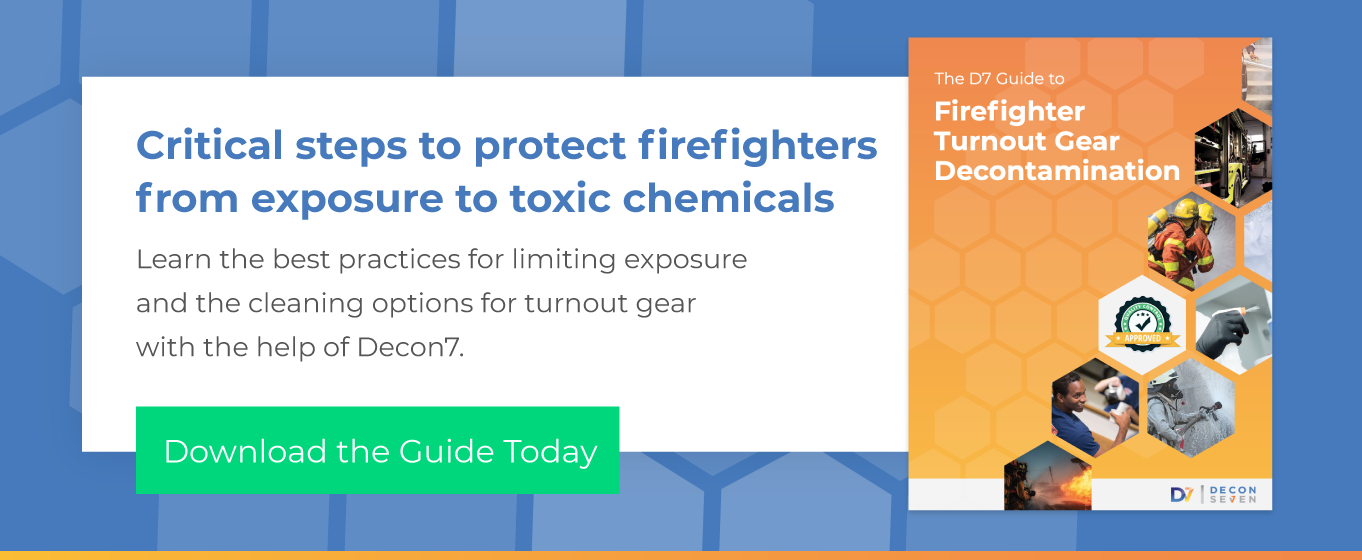Firefighters risk their lives to protect others, but many people don’t realize that flames and smoke are not the only threats to their health and safety. During and after battling a blaze, firefighters can be exposed to harmful carcinogens that can have lasting health effects if not handled appropriately.
The National Institute for Occupational Safety and Health (NIOSH) conducted a study in 2013 and determined that, as a group, firefighters have higher rates of cancer than the general U.S. population. Although the study showed that firefighters are susceptible to multiple types of cancer, respiratory, digestive, and urinary systems represented the highest percentage. Understanding why firefighters have a higher risk of getting certain types of cancer is an important step toward prevention.
Firefighter Carcinogen Exposure
Firefighter carcinogen exposure can occur through multiple channels, such as inhalation, absorption through skin, and lingering on safety gear. Some of the carcinogens that firefighters might be exposed to when battling blazes in different types of buildings include:
-
- Benzene
- PAHs (polycyclic aromatic hydrocarbons such as naphthalene and benzopyrene)
- PCBs (polychlorinated biphenyls)
- Aldehydes
- Asbestos
- Toxic metal compounds such as arsenic, cadmium, and lead
The NIOSH study also found that exposure to asbestos causes higher rates of mesothelioma among firefighters compared to the general population. Wearing appropriate personal protective equipment (PPE) is an important preventive measure for reducing exposure through inhalation and skin contact, but what about when the gear becomes contaminated too?
After repeated use and exposure to toxic compounds, fire protection gear can become a source of exposure itself, which is why it’s so important to properly clean and decontaminate it. The best practices for minimizing exposure include:
-
- Properly wearing PPE and keeping it on through all phases of the fire event
- Removing gear as soon as safely possible
- Cleaning gear after every exposure
- Cleaning skin and changing clothing after removing PPE
Decontaminating Firefighter PPE
A FEMA study showed that infrequent cleaning of PPE allowed toxic compounds to accumulate, potentially exposing future users to carcinogens through skin contact or (less likely) inhalation. The National Fire Protection Association (NFPA) and Fire Protection Research Foundation formed a task group to identify the best procedures for cleaning PPE that has been contaminated. The group released an interim report that identifies some of the challenges related to decontaminating fire protection gear, namely difficulty identifying and quantifying contaminants and determining the efficacy of decontamination products. Because of the diversity of contaminants found in smoke and building materials, it’s important to use decontamination products and processes that address them all.
D7 and Fireground Decontamination
Researchers at Baylor University showed that compared to detergent, D7’s unique formulation is more effective at removing contaminants from firefighting PPE. The study examined 20 chemical contaminants that are frequently found on PPE, including PAHs, organophosphate esters (OPEs), and pesticides.
The product can be applied in a number of ways, including as a foam, spray, fog, or soak. Applying the foam on-site after a fire event using a portable sprayer can significantly reduce the risk of exposure to contaminants that soak into gear. Following up by laundering the gear will further reduce the risk of future exposure. D7 has been tested on a variety of materials, including those used in fire protection gear, and it will not degrade fabrics or cause them to fade. D7 can also be applied as a fog in ambulances to neutralize any chemicals that might have been transferred from the fireground during an emergency event.
Be Proactive About Protection
Firefighter carcinogen exposure is a serious issue, and all possible steps should be taken to reduce risks. Regularly cleaning and decontaminating fire protection gear helps reduce exposure to potentially harmful chemicals. After a grueling fire event, having a product that is easy to apply helps improve compliance and also eases the burden on a tough job. To learn more about how to use D7 for fireground decontamination or any other contamination issue you are facing, ask us about our public safety applications.


